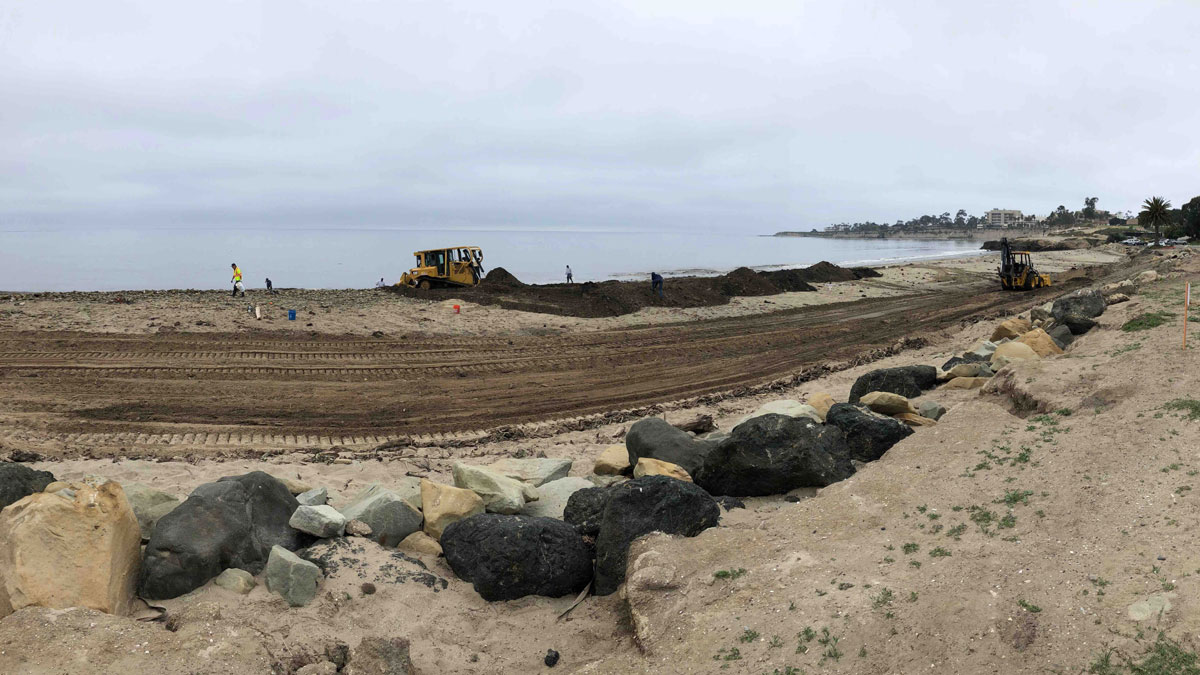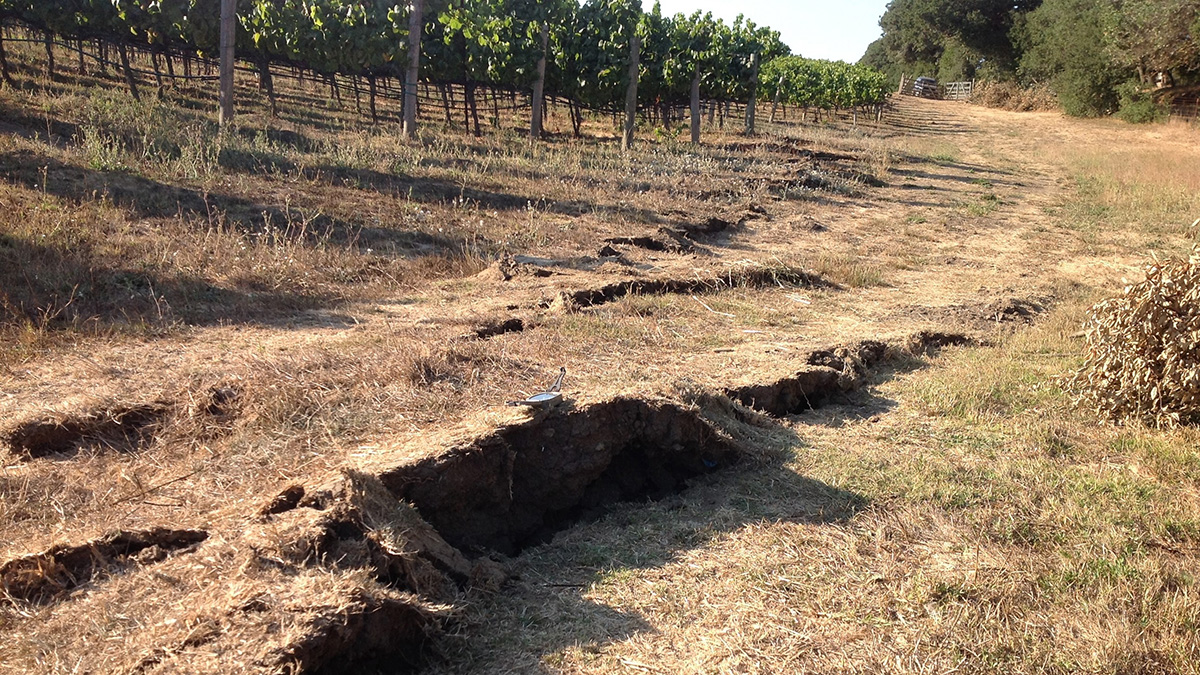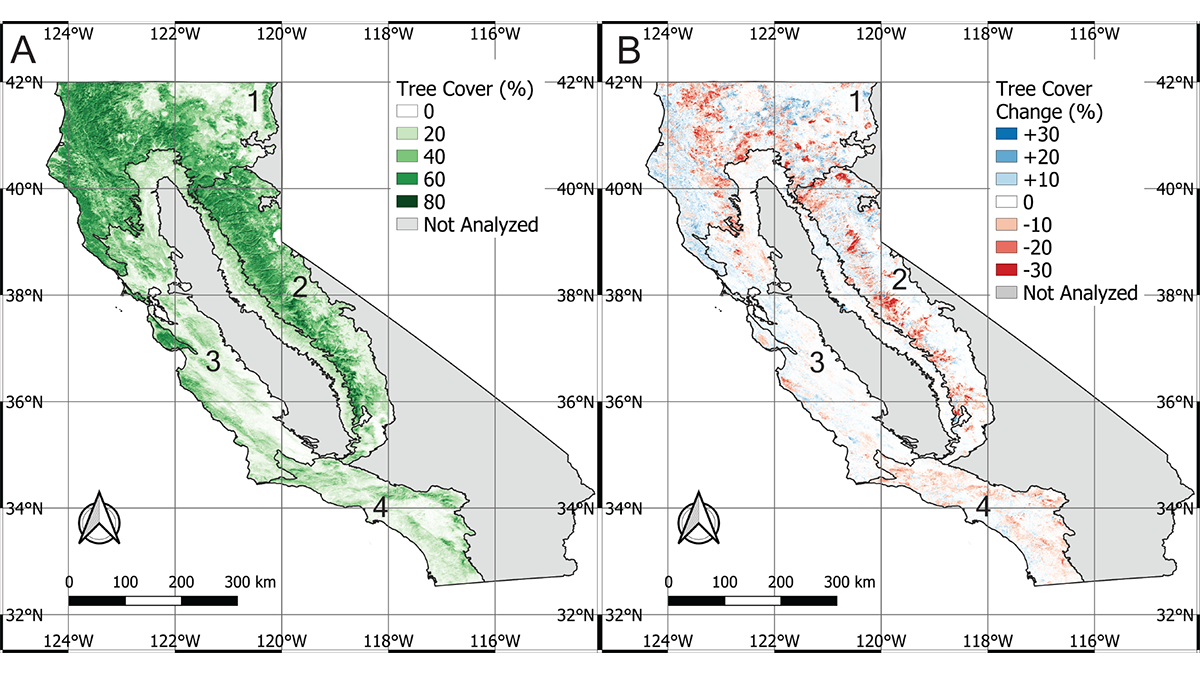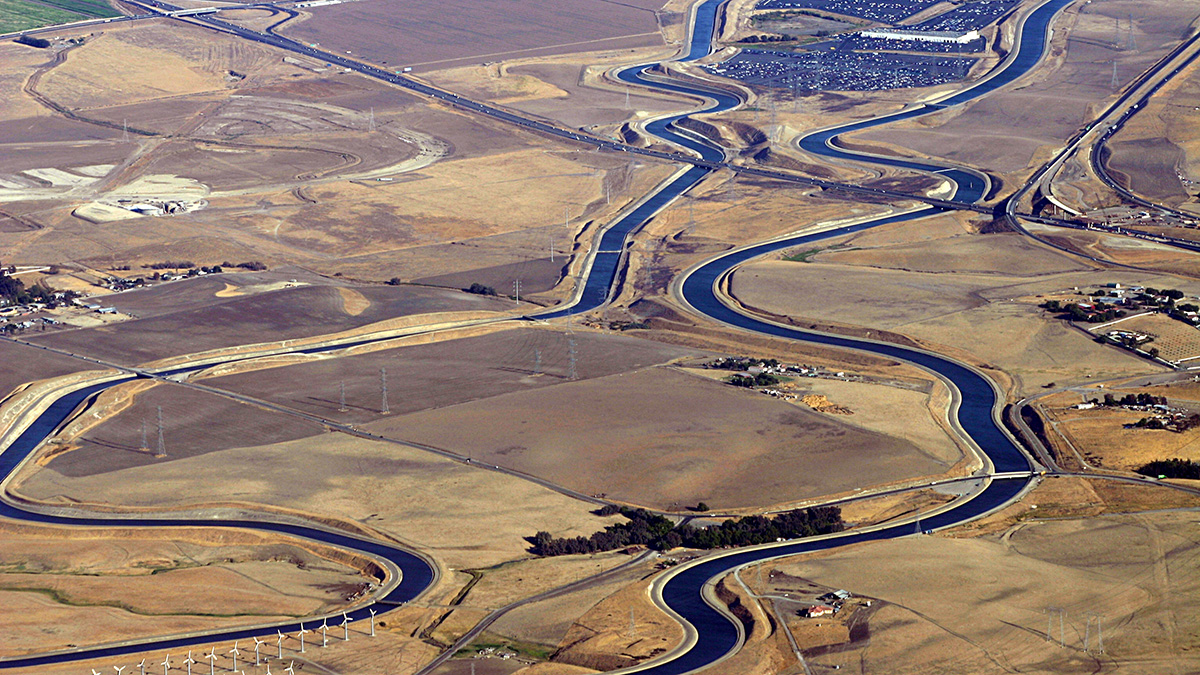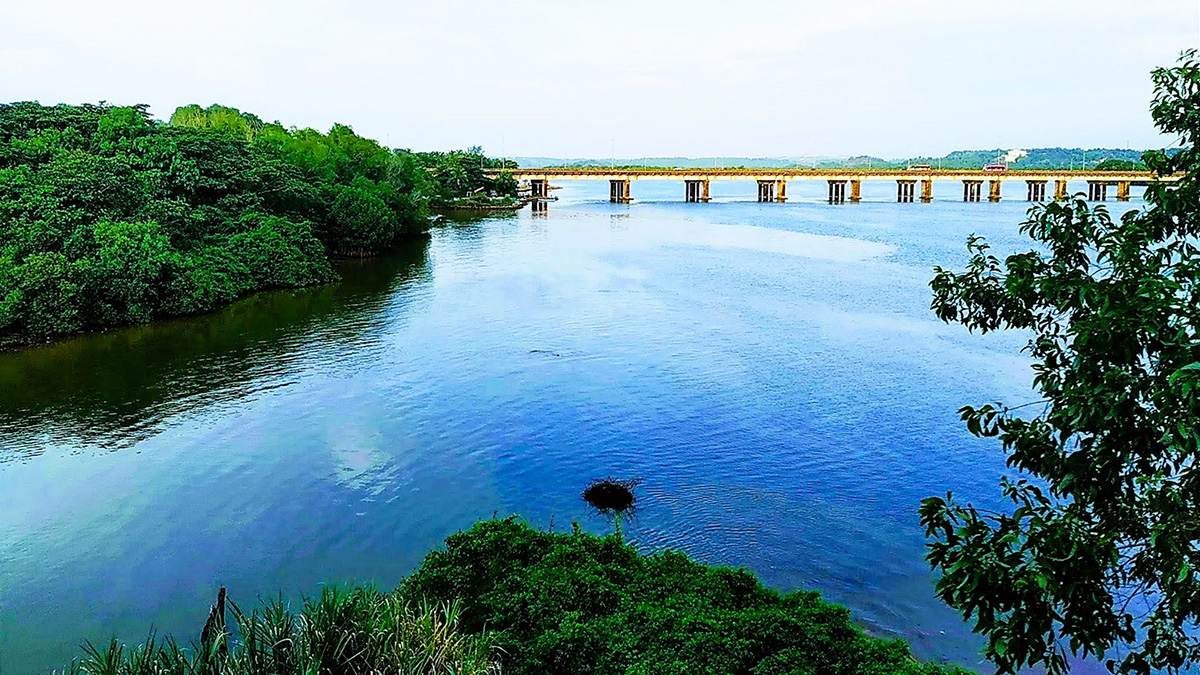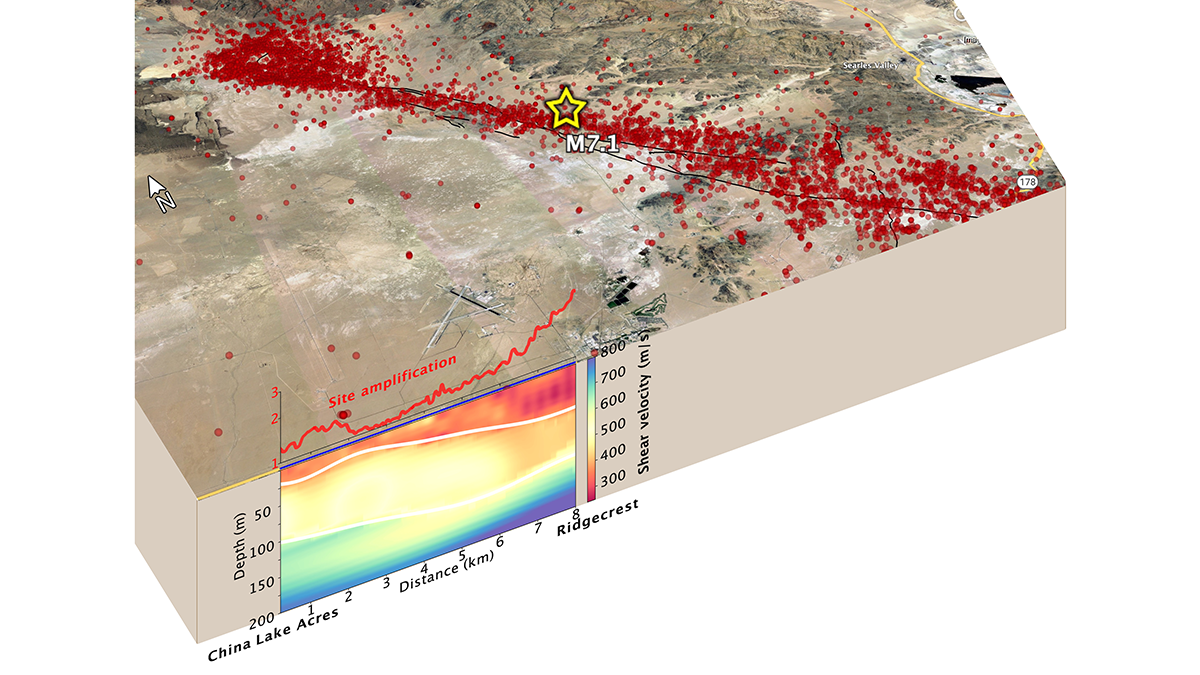California officials faced a conundrum in dealing with mudslides after the Thomas Fire.
California
Slight Shifts in Magnetic Field Preceded California Earthquakes
Magnetometers detected faint signals that with further study, may improve our understanding of what happens before earthquakes and offer promise for early detection.
A Burning Issue
California has lost 7% of its forest cover to climate change over the past 25 years.
How Land Deformation Occurs When Fault Sections Creep
Using a physical experiment, researchers show how off-fault deformation occurs along strike-slip faults with different types of motion.
Assessing Water Infrastructure Investments in California
Exploratory modeling in California’s Central Valley indicates that evaluating the costs, benefits, and risks to individual providers is necessary to ensure the viability of future water projects.
A Lidar’s-Eye View of How Forests Are Faring
Success in Yosemite is driving the wider use of lidar surveys to support forest health and wildfire resilience, study wildlife habitats, and monitor water resources.
A New Index to Quantify River Fragmentation
Researchers have developed a new analysis based on a river’s catchment area as opposed its length.
Forest Fires Could Boost Western U.S. Water Supplies
Streamflow in the West has been below average since the early 2000s, but a new analysis shows that streams aren’t as dry as expected.
Fiber-Optic Cables Can Produce High-Resolution Underground Maps
Telecom fiber repurposed as distributed acoustic sensing arrays can image near-surface structure and potentially improve seismic hazard mapping in urban areas.
Rising Seas Boost Tsunami Impacts on Distant Shorelines
Modeling suggests that rising sea levels will render Southern California ports increasingly vulnerable to waves from distant-source tsunamis.

